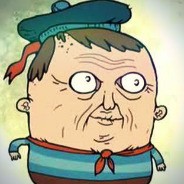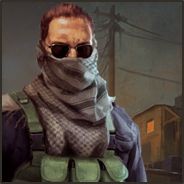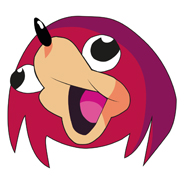1) What's the capital of the Soviet Union? It is an
important industrial centre, isn't it?
2. What other important industrial centres do you know
in the Soviet Union?
3. Is the Soviet Union an industrial or an agricultural
country?
Ответы на вопрос:
1) What's the capital of the Soviet Union? It is an
important industrial centre, isn't it?
Following the success of the Russian Revolution of 1917, Vladimir Lenin, fearing possible foreign invasion, moved the capital from Petrograd to Moscow on March 12, 1918. The Kremlin once again became the seat of power and the political centre of the new state.
Primary industries in Moscow included the chemical, metallurgy, food, textile, furniture, energy production, software development and machinery industries.
The Mil Moscow Helicopter Plant was one of the leading producers of military and civil helicopters in the world. Khrunichev State Research and Production Space Center produced various space equipment, including modules for space stations Mir, Salyut and the ISS as well as Proton launch vehicles and military ICBMs. Sukhoi, Ilyushin, Mikoyan, Tupolev and Yakovlev aircraft design bureaus also were situated in Moscow.
The Electrozavod factory was the first transformer factory in Russia. The Kristall distillery was the oldest distillery in Russia producing vodka types, including "Stolichnaya" while wines were produced at Moscow wine plants, including the Moscow Interrepublican Vinery. The Moscow Jewelry Factory and the Jewellerprom were producers of jewellery in Russia; Jewellerprom used to produce the exclusive Order of Victory, awarded to those aiding the Soviet Union's Red Army during World War II.
There were other industries located just outside the city of Moscow, as well as microelectronic industries in Zelenograd, including Ruselectronics companies.
Gazprom, the largest extractor of natural gas in the world and the largest Russian company, had offices also in Moscow, as well as other oil, gas, and electricity companies.
2. What other important industrial centres do you know
in the Soviet Union?
Other important industrial centres in the Soviet Union were Omsk, Chelyabinsk, Dzerzhinsk, Volgodonsk, Nizhnevartovsk and Syzran.
3. Is the Soviet Union an industrial or an agricultural
country?
Agriculture in the Soviet Union was mostly collectivized, with some limited cultivation of private plots. It is often viewed as one of the more inefficient sectors of the economy of the Soviet Union. A number of food taxes (prodrazverstka, prodnalog, and others) were introduced in the early Soviet period despite the Decree on Land that immediately followed the October Revolution. The forced collectivization and class war against (vaguely defined) "kulaks" under Stalinism greatly disrupted farm output in the 1920s and 1930s, contributing to the Soviet famine of 1932–33 (most especially the holodomor in Ukraine). A system of state and collective farms, known as sovkhozes and kolkhozes, respectively, placed the rural population in a system intended to be unprecedentedly productive and fair but which turned out to be chronically inefficient and lacking in fairness. Under the administrations of Nikita Khrushchev, Leonid Brezhnev, and Mikhail Gorbachev, many reforms (such as Khrushchev's Virgin Lands Campaign) were enacted as attempts to defray the inefficiencies of the Stalinist agricultural system. However, Marxist–Leninist ideology did not allow for any substantial amount of market mechanism to coexist alongside central planning, so the private plot fraction of Soviet agriculture, which was its most productive, remained confined to a limited role. Throughout its later decades the Soviet Union never stopped using substantial portions of the precious metals mined each year in Siberia to pay for grain imports, which has been taken by various authors as an economic indicator showing that the country's agriculture was never as successful as it ought to have been. The real numbers, however, were treated as state secrets at the time, so accurate analysis of the sector's performance was limited outside the USSR and nearly impossible to assemble within its borders. However, Soviet citizens as consumers were familiar with the fact that foods, especially meats, were often noticeably scarce, to the point that not lack of money so much as lack of things to buy with it was the limiting factor in their standard of living.
Despite immense land resources, extensive farm machinery and agrochemical industries, and a large rural workforce, Soviet agriculture was relatively unproductive. Output was hampered in many areas by the climate and poor worker productivity.
Реши свою проблему, спроси otvet5GPT
-
Быстро
Мгновенный ответ на твой вопрос -
Точно
Бот обладает знаниями во всех сферах -
Бесплатно
Задай вопрос и получи ответ бесплатно

Популярно: Английский язык
-
С какими частями речи употребляется глагол BE?...
 кика2005104.06.2022 07:10
кика2005104.06.2022 07:10 -
1-Did you … anything to him about your problem? 1)tell 2)say 2-I think...
 nastakosmos1227.09.2021 14:52
nastakosmos1227.09.2021 14:52 -
2 Выберите одну страну из перечисленных в видео. Составьте рассказ (не...
 thetrueraincorn02.01.2022 11:58
thetrueraincorn02.01.2022 11:58 -
Как значит по англиски отправлена...
 juliatroenko01.06.2023 19:33
juliatroenko01.06.2023 19:33 -
Look at the sentences below, Choose the right answer...
 nastya03051321.07.2020 09:35
nastya03051321.07.2020 09:35 -
1. Fill in avalanche, tornado, pollution, endangered, hail 1. The problem...
 9573110.06.2023 15:43
9573110.06.2023 15:43 -
ЗА ОТВЕТ Раскройте скобки, поставьте глаголы в Present Continuous. ***НАПОМИНАЮ,...
 Keeping03.12.2020 11:30
Keeping03.12.2020 11:30 -
нужно перевести и вставить слово в пропущенные строки...
 nikihouston34217.10.2021 12:34
nikihouston34217.10.2021 12:34 -
времени в обрез умоляю пацанв...
 bakinka00512.09.2022 12:50
bakinka00512.09.2022 12:50 -
ПОСТАВИТЬ ВО МНОЖЕСТВЕННОЕ ЧИСЛО, ГДЕ НЕОБХОДИМО A: I went to the zoo yesterday....
 Настена11213203.06.2023 00:17
Настена11213203.06.2023 00:17

Есть вопросы?
-
Как otvet5GPT работает?
otvet5GPT использует большую языковую модель вместе с базой данных GPT для обеспечения высококачественных образовательных результатов. otvet5GPT действует как доступный академический ресурс вне класса. -
Сколько это стоит?
Проект находиться на стадии тестирования и все услуги бесплатны. -
Могу ли я использовать otvet5GPT в школе?
Конечно! Нейросеть может помочь вам делать конспекты лекций, придумывать идеи в классе и многое другое! -
В чем отличия от ChatGPT?
otvet5GPT черпает академические источники из собственной базы данных и предназначен специально для студентов. otvet5GPT также адаптируется к вашему стилю письма, предоставляя ряд образовательных инструментов, предназначенных для улучшения обучения.
